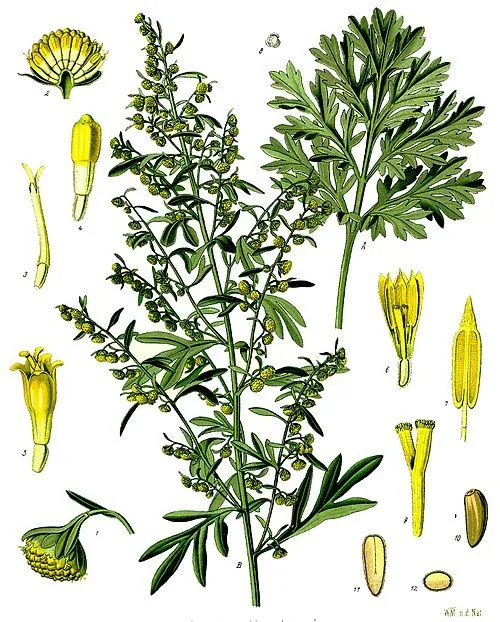Table of Contents
Bucking the health system must be in my genes, as I have a strong regard for looking after myself using herbs and traditional practices to remedy health problems before expecting prescriptions from the medical industry to do the trick. Natural remedies, when correctly used under the supervision of trained practitioners, can be effective and crucially they are cheap and widely accessible in third world countries.
Big Pharma makes no money out of hydroxychloroquine or ivermectin or naturally derived products such as nattokinase, quercetin or NAC used to treat Covid-19, and the NZ embargo on the use of Artemisia annua (artemisinin, sweet wormwood) extract should come as no surprise.
What is surprising is that China is the country that led the research into Artemisia annua’s anti-viral and anti-malarial properties. I’m not a scientist or doctor, but since the 1970s development of this ancient Chinese traditional medicine is astonishing, as is the common theme of antiviral and anti-parasitic properties found in alternative Covid-19 treatments.
Artemisinin has saved millions of lives and represents one of the significant contributions of China to global health.
Artemisinin represents a new class of antimalarial drugs, which leads to two paradigm shifts in antimalarial research and therapy. The first one is the change from quinoline-based antimalarial drugs to artemisinin-based therapies due to the emergence of parasites resistant to quinoline drugs.
The second paradigm shift is the change of research direction in antimalarial drug development. Artemisinin and its derivatives are in a new class of antimalarial agents with unique structure (1,2,4-trioxane peroxide pharmacophore), which has become a new direction for antimalarial drug development. For example, some of the most promising drugs under clinical trials, including OZ277 and OZ439, are synthetic peroxides with key structures similar to artemisinin.
In China, Novartis works with about 100,000 farmers who cultivate Artemisia annua, that Novartis calls “a crucial plant in the production of our antimalarial treatment.
“Who would have thought that an ancient Chinese herbal remedy would one day become the panacea for malaria? Sweet wormwood (Artemisia annua) was indeed used in traditional Chinese medicine for more than 2 000 years to treat fevers. However, it was not until the 1970s that a team of Chinese scientists discovered that the artemisinin contained in its leaves cleared malaria parasites. Today, artemisinin is the cornerstone of artemisinin-based combination therapies (ACTs), which have become the standard of care in malaria treatment.”
Vigilant News 9 November 2023
A Chinese scientist (Qian et al. 1982) discovered the anti-viral properties of Artemisia annua in 1982.
Artemisinin has been revealed to inhibit replication and penetration of viruses both in vivo and in vitro as well as generating enhanced host type I interferon response (Wang et al. 2020a). The replication of Hepatitis C replicon, a single-stranded RNAvirus just like SARS-CoV-2 was reported to be inhibited by artemisinin (Obeid et al. 2013). Very recently, a study on molecular dynamic using computer-aided drug discovery (CADD) revealed that artemisinin and its derivatives could be more potent than hydroxychloroquine (HCQ) in silico. In addition to that, artemisinin and its derived molecules showed an extra mode of interaction by binding to Lys353 and Lys31-binding hotspots of SARS-CoV-2 spike protein and producing a better Vina docking score of – 7.1 kcal/mol for artenilic acid than – 5.5 kcal/mol for hydroxychloroquine (Sehailia and Chemat 2020). The study further revealed that the formed complexes interfered and remained stable on the SARS-CoV-2 Spike protein receptor site. Besides the antiviral activity, Artemisia contains a high concentration of zinc, which is reported to be effective for the immunomodulation effect of host response and increase in CD4 level (Honscheid et al. 2009). It should be noted that the antioxidant ability of Artemisia enhances immune defense.
NIH National Library of Medicine published online 5 May 2021
In 2020 Artemisia annua extract was not available in NZ, but Medsafe classified it as a prescription medicine anyway. Why?
The new classification means it will no longer be able to be sold in pharmacies or online.
This classification affects the artemisia annua extract only, not the plant.
Medsafe’s Group Manager Chris James says the change now means all products containing artemisia annua extract can only be supplied on a prescription given by a health care professional authorised under the Medicines Act 1981. There are no approved products containing artemisia annua extract currently.
Ministry of Health Media Release 18 May 2020
The reason given for the ban was public safety, but the NIH paper released after the NZ ban states “From a safety point of view, hundreds of phytochemicals present in A. annua have been revealed to be below recommended toxicity limits.” If Medsafe and the Ministry of Health were so concerned about public health and safety why didn’t they investigate the potential of alternative Covid-19 treatments including Artemisia annua? It’s not as if they didn’t have the time, the knowledge or the money being thrown around wildly at Covid-19.
In 2015 the Nobel Prize in Physiology or Medicine was jointly awarded to:
William C Campbell and Satoshi Omura for their discoveries concerning a novel therapy against infections caused by roundworm parasites and the other half to Tu Youyou for her discoveries concerning a novel therapy against Malaria.
Diseases caused by parasites have plagued humankind for millennia and constitute a major global health problem. In particular, parasitic diseases affect the world’s poorest populations and represent a huge barrier to improving human health and wellbeing. This year’s Nobel Laureates have developed therapies that have revolutionized the treatment of some of the most devastating parasitic diseases.
William C Campbell and Satoshi Omura discovered a new drug, Avermectin, the derivatives of which have radically lowered the incidence of River Blindness and Lymphatic Filariasis, as well as showing efficacy against an expanding number of other parasitic diseases. Tu Youyou discovered Artemisinin, a drug that has significantly reduced the mortality rates for patients suffering from Malaria.
These two discoveries have provided humankind with powerful new means to combat these debilitating diseases that affect hundreds of millions of people annually. The consequences in terms of improved human health and reduced suffering are immeasurable.
Nobel Prize Press Release 5 October 2015
During the pandemic NZ wasted vast amounts of public health money on advertising to encourage participation in the planned experimental vaccination programme. That money could have been better spent paying the scientists genuinely interested in improving public health to look at alternative treatments for the disease – as China has done for decades and continued to do during the pandemic along with India, Egypt, Germany, South Africa and other countries on the African continent.
If this doesn’t raise concerns about the Therapeutics Products Act, where most provisions come into effect mid-2026, I don’t know what will. New Zealanders need to take a closer look at what the government has done and is doing in the name of health and safety. Dr Reti, that means you.









